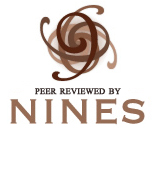NINES Peer-Reviewed Essays content in NINES is protected by a Creative Commons License.

D.G. Rossetti’s “The Burden of Nineveh”: Further Excavations
Pages:
«Previous page
1Page 1
2Page 2
3Page 3
You are here 4Page 4 5Page 5 EndmatterEndmatter »Next page
You are here 4Page 4 5Page 5 EndmatterEndmatter »Next page
537
This process of revision is described in greater detail in a letter Rossetti sent (on August 27, 1869) to his brother William Michael to ask his opinion on revisions he was making to “The Burden of Nineveh” in proof. This letter also gives us a version of some of the lines found in the Marillier MS. Rossetti writes, “The stanza “On London stones” is combined from what was once 2 stanzas. That change was made when I printed the poem first” (Correspondence 69.139). He then goes on to quote an early 2-stanza version, one close to but presumably a bit later than the Marillier MS version (given the different opening phrase):
On London stones ----------
---------------------------------
---------------------------------
---------------------------------
----------- the old earth & sea
How much Heaven’s thunder – how much else
Man’s puny roar? – What cry of shells
Cleft amid leaguered citadels –
How many lordships loud with bells
Heardst thou in secret Nineveh?
O when upon each sculptured court
Where even the wind might not resort—
O’er which time passed, of like import,
With the wild Arab boys at sport,--
A living face looked in to see,--
& seemed it not &c ------------------
------------------------------------------ (Correspondence 69.139)
---------------------------------
---------------------------------
---------------------------------
----------- the old earth & sea
How much Heaven’s thunder – how much else
Man’s puny roar? – What cry of shells
Cleft amid leaguered citadels –
How many lordships loud with bells
Heardst thou in secret Nineveh?
O when upon each sculptured court
Where even the wind might not resort—
O’er which time passed, of like import,
With the wild Arab boys at sport,--
A living face looked in to see,--
& seemed it not &c ------------------
------------------------------------------ (Correspondence 69.139)
Like the Marillier manuscripts, this piece of correspondence gives more evidence of the state of the poem prior to 1856; Rossetti only bothers to quote lines that had not yet seen print, and which must have existed in one of his manuscript notebooks. In the same letter, Rossetti writes,
I hardly know why I made the omission except for the great end of condensation. Is there anything lost by it, and does the present form seem at all abrupt?...[William Bell] Scott thinks the second half of the first stanza rather extraneous but the first half of the second a great gain. I have some idea that [Ford Madox] Brown once suggested difficulties about the shells, bells &c. – could they be heard under the earth? – were there any to be heard? -- &c. (Correspondence 69.139)
Scott’s opinion carried the day: of the lines from the 1850 version that Rossetti quotes here, the “shells, bells &c.” (also present in the Marillier MS.) were never published, but the “Arab boys” passage made the cut, once it was combined with new lines. Essentially, the fourth stanza of the 1856 Oxford/Cambridge version was split in half: the “sculptured warriors” lines were combined with the “Arab boys,” while the “plague of darkness” segment was joined by newly-written lines beginning, “Lo thou! could all thy priests have shown / Such proof to make thy godhead known?”(lines 46-47). A week later, Rossetti writes in a follow-up note to William Michael, “I have…made the proposed restoration (with addition) to the Nineveh.”(Correspondence 69.146).
